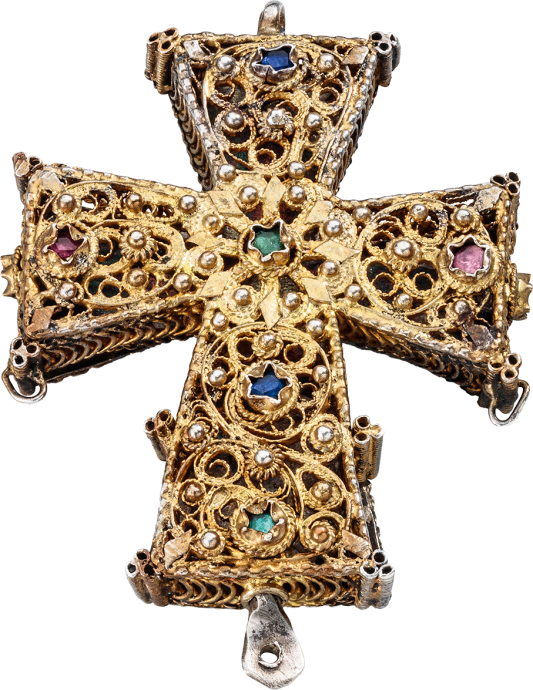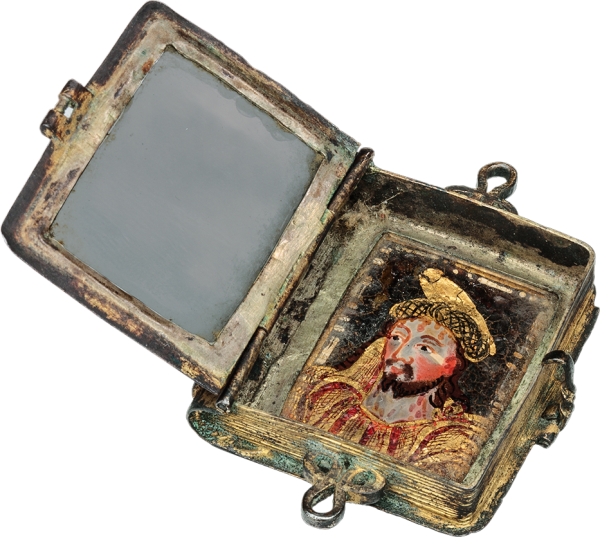


Reliquary Cross Pendant
, 18th-19th centuryReliquary Cross Pendant
Description
This cross attests to the conservative nature of the cross pendant. Its techniques situate its origins in an Austro-Hungarian workshop of perhaps the late eighteenth century. This example has no figurative or explicit iconography. It makes its case for the glory of the Cross (or other relic that it may have contained) through intricate workmanship and applied gems. The face of the cross comprises an elaborate network of gilded silver filigree scrolls and globules that center on an openwork rosette of radiating spikes with a paste gem at its midpoint. It is lavishly and further adorned with globules and multicolor paste gems set in star-form mounts. Beads of some sort, now missing, would have dangled from the three loops. The surface might be said to virtually twinkle with ornament.
Double-sided pendant made of gilded silver filigree in the shape of a Greek cross, with pendant loop. The front and side panels composed of intricate filigree scrolls, globules, and a central rosette. Interspersed are crimped collet settings with corded wire base and red, blue, and green glass-paste gemstones. At the base is a silver screw (a later replacement), which opens the hinged backplate when removed. The backplate composed of silver with soldered filigree wire and globule ornaments. The cross would have contained a relic (now missing). On both sides of the cross there are identical hallmarks in hexagonal form with greyhound and "S" (?) and "2" from the Austro Hungarian Empire used 1872-1922 for quality control; see Rohrwasser 1987, pp. 18-19.
Comparisons and Literature
A similar unpublished cross pendant in a private collection is attributed to the Balkans, probably Bulgaria, which was part of the Austro-Hungarian Empire (see hallmark). For related cross pendants from the Balkan area, see the Perusini Collection (Gri/Cantarutti 1988, pp. 101-2).

